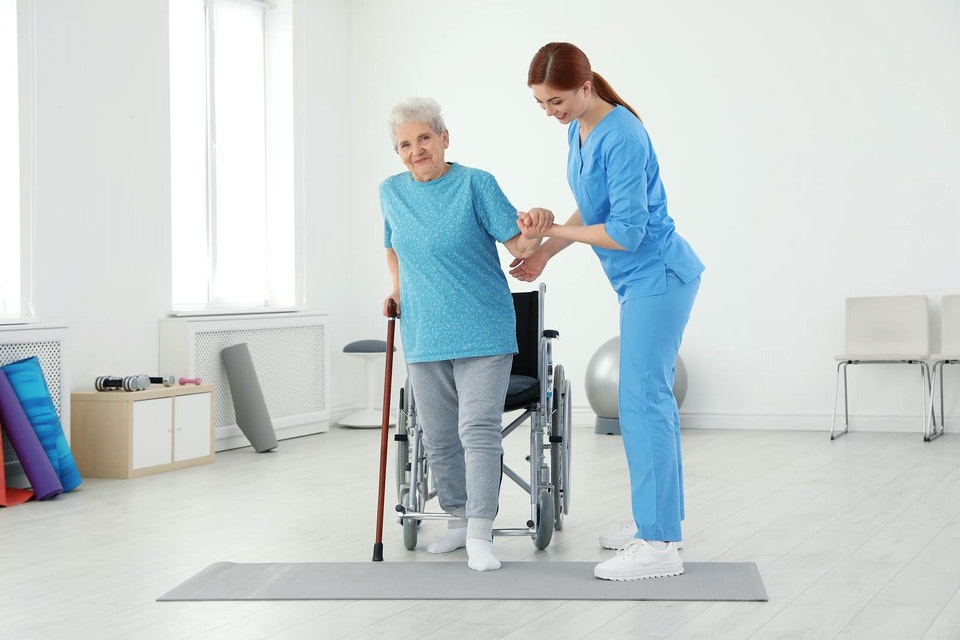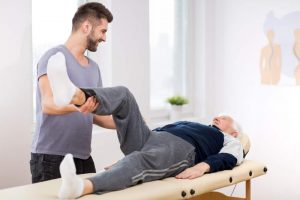Stroke recovery is often a lengthy process that takes a very long time. After the patients return home after treatment, they still have to complete rehabilitation. During rehabilitation, patients need an intensive post-stroke exercise program that includes physiotherapy, occupational therapy, and speech therapy. At this phase, the patients need a goal setting framework to ensure the recovery progresses in a positive direction.
What is Rehabilitation Goal Setting?
The focus of stroke recovery or rehabilitation is not just the patients’ physical condition. Their mental health also demands recovery and support. As patients are discharged from hospital, goal setting becomes part of the rehabilitation process.
Goal setting is a process of actively taking steps to achieve desired targets or goals. In goal setting, there is an action plan designed to motivate and guide a person to achieve the goals. That way, when setting a goal, the person is fully focused on the thoughts, emotions, and actions toward efforts to obtain the goals.
Goal setting is not a specific term in stroke rehabilitation. However, doctors who discharge patients to their homes after treatment usually cite goal setting to support the patients’ self-confidence and independence. Patients usually formulate goal setting along with the therapists who help with stroke rehabilitation, such as physiotherapist, occupational therapist, and speech therapist. By setting the goal, rehabilitation efforts will be more productive and the patients’ recovery will progress as planned.
Why is Goal Setting Important?
Stroke patients are often confused and lose their quality of life because of their physical limitations caused by the stroke. This condition may impede the rehabilitation carried out through a series of therapies. Goal setting is important to give patients a grip to be enthusiastic about undergoing the rehabilitation needed to improve their quality of life after stroke.
According to some studies, goal setting may have a positive effect on stroke rehabilitation. However, patients’ participation is required in the goal setting formulation to ensure the goals are realistic and relevant to the recovery process.
Having a set goal allows the patients to have a long-term insight and short-term motivation. They will always specify that target during stroke recovery period so they will not lose direction when undergoing rehabilitation to improve their cognitive, motor, sensory, and speech ability impaired by the stroke.
Stroke Recovery Process
Stroke recovery takes place since the patients have received treatment by medical personnel after the attack. The period of the first 4.5 hours after the onset of stroke symptoms is key to the patients’ recovery process. During this so-called golden period, medical personnel will perform intensive treatment to prevent further damage of blood vessels to increase the patients’ chance of recovery.
The recovery process in a stroke is gradual and can take many years. From the hospital, recovery will continue at the patients’ residence. Post-stroke intensive therapy program, which includes physiotherapy, occupational therapy, and speech therapy, is part of the recovery process.
Short-Term and Long-Term Goals in Post-Stroke Rehabilitation
Goals set in stroke recovery can be divided into short-term and long-term goals. We may say short-term goals are stepping stones to achieve long-term goals. Therefore, the patients need to go through the short-term goals first before they can achieve the bigger long-term goals. Medium-term goals are also sometimes required in post-stroke rehabilitation.
Short-term goals may focus on specific exercises, such as squats to strengthen the leg muscles so the patients can climb up stairs on their own. First, set a target to climb up the first step, then second step, and so on until the long-term goal is achieved, which is the final top step. This exercise has to be performed under the guidance of a therapist for utmost safety and results.
How to Create a Realistic Goal Setting Plan?
It is important to make certain the patients have a realistic goal setting plan because every stroke has a different effect. This means stroke recovery for every patient is different. Goals set in post-stroke rehabilitation should be tailored to each patient’s condition.
For example, a patient who has had a moderate stroke may set a goal to walk again. Meanwhile, a realistic target for a severe stroke survivor perhaps is to regain swallowing ability. If the goals don’t match the patients’ condition, they may feel anxious, frustrated, and lack of motivation to go through recovery.
Therefore, the role of therapists who understand the patients’ condition is needed. They will help setting goals by ensuring the therapeutic challenges the patients face in recovery process match their condition. One way to formulate recovery goals is the SMART goals method:
Specific: the goals must be specifically described.
Measurable: the goals must be measurable. Use some type of table to measure and track your achievements over time.
Achievable: high-level goals are great, but make sure they are not impossible to achieve.
Relevant: goals should be relevant and meaningful to life.
Time-targeted: set a deadline for achieving each goal to keep on track.
What If the Goals Are Missed?
In stroke recovery, some goals may not be achieved because of several factors. What often happens is that the patients disagree with goal setting and fulfilment plan created by the therapists. For the success of therapy, proper collaboration between therapist and patients and also patients’ family is required.
When the goals are missed, the therapists must understand patients’ condition and continue to maintain their hope for recovery. It should be underlined that the smallest progress in rehabilitation process may be considered a success. For example, being able to move a finger. Failure to achieve the goals does not mean the rehabilitation has failed. The patients and therapists should perform an evaluation together to find out what is obstructing the goals and work on that obstruction.
Healthy Living with Stroke
Overall health of the patients is also affecting stroke recovery goals. Stroke survivors need to maintain their health by paying attention to their daily habits, including diet. There are certain proteins in the brain that can help develop ability to regain life skills and freedom lost due to stroke.
Therefore, rehabilitation is usually also complemented by dietary regulation with the addition of food containing nutrients that are useful to produce more proteins. These nutrients include antioxidants, flavonoids, lycopene, omega-3, vitamin E, magnesium, polyphenols, and oleic acid.
Healthy lifestyle changes are also important to prevent another stroke. If the survivor is a smoker, for example, try quit smoking slowly. Consultations with doctors and therapists are useful for the patients to stay healthy after a stroke.



